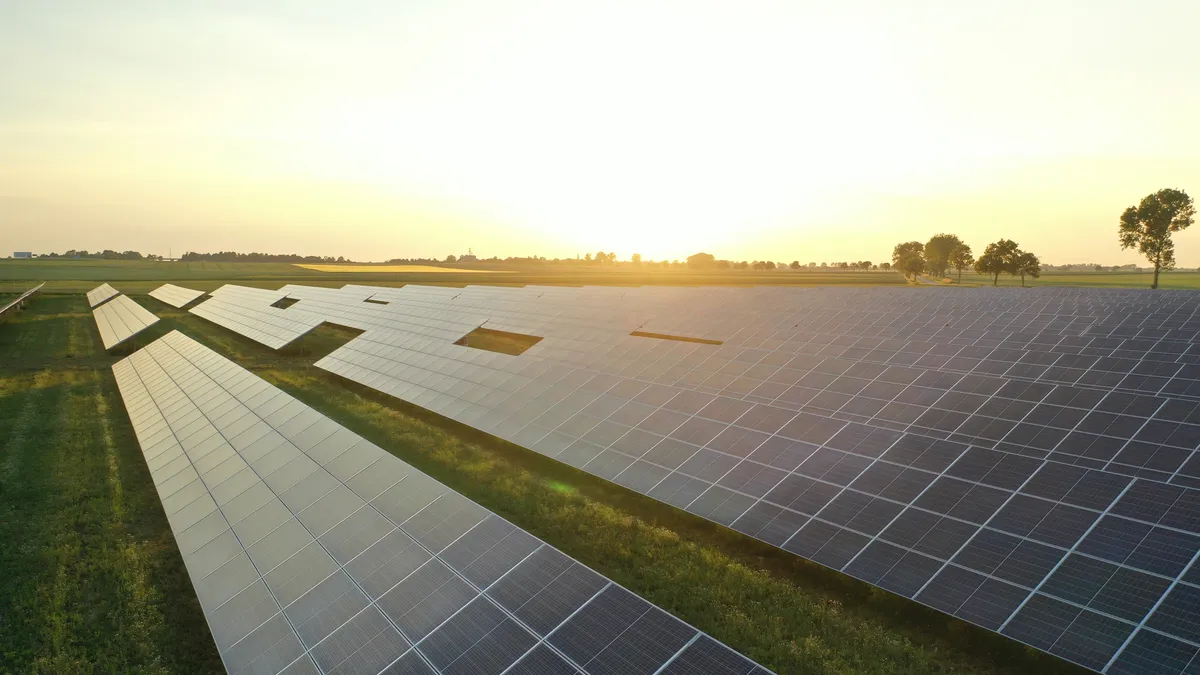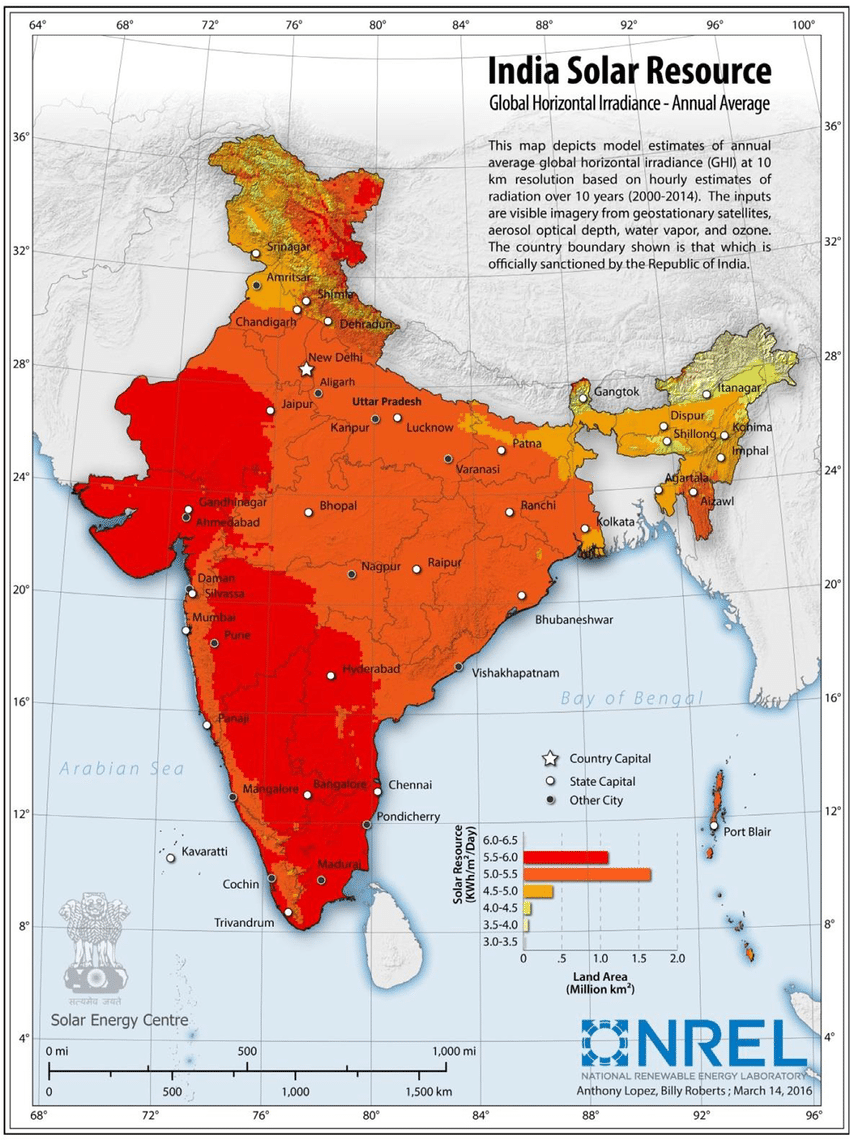Description

Copyright infringement not intended
Picture Courtesy: https://www.cnet.com/home/energy-and-utilities/peak-sun-hours/
Context: The study conducted by scientists at the India Meteorological Department (IMD) highlights an alarming decreasing trend in solar radiation available for electricity generation in India.
Factors Contributing to Decreasing Solar Radiation
Increased Aerosol Load
- Aerosols are fine particles suspended in the atmosphere, which can originate from various sources such as industrial emissions, vehicle exhaust, biomass burning, and dust storms. These aerosols have the ability to absorb and scatter sunlight.
- When aerosol concentrations increase in the atmosphere, they can reduce the amount of solar radiation reaching the Earth's surface. This reduction in solar radiation directly impacts the performance of solar panels by limiting the amount of sunlight available for conversion into electricity.
Cloud Formation
- Aerosols can also act as cloud condensation nuclei, promoting the formation of clouds. Clouds can block incoming solar radiation, further reducing the solar energy reaching the ground. This clouding effect can vary both spatially and temporally, impacting solar radiation levels at different locations and times.
Study Methodology and Findings
- The study utilized data from 13 IMD stations with continuous solar radiation records spanning from 1985 to 2019. These stations were chosen for their availability of reliable data over an extended period.
- Solar Photovoltaic (SPV) potential, which represents the amount of solar radiation available for conversion into electricity by solar panels, exhibited a general decline across all analyzed stations. This decline indicates a reduction in the efficiency of solar energy generation due to decreased sunlight availability.

Implications for Solar Energy Generation
- The declining solar radiation trend directly impacts the efficiency and output of solar photovoltaic systems. Reduced sunlight availability translates to lower electricity generation from solar panels, affecting the overall performance and economic viability of solar energy projects.
- India has set ambitious targets to increase its renewable energy capacity to 500 GW by 2030. However, the observed decline in solar radiation poses challenges to achieving these targets, especially in regions heavily reliant on solar power such as Gujarat and Rajasthan.
Mitigation Strategies
- Technology Upgrades: One strategy to counteract the impact of reduced solar radiation is to deploy more efficient solar panel technologies. Advanced solar panels with higher conversion efficiencies can maximize electricity generation even under lower sunlight conditions.
- Policy Support: Continued government support through policies and incentives for solar energy deployment is crucial. Incentivizing the adoption of innovative solar technologies and promoting research and development in solar energy can enhance the resilience of India's solar sector against changing environmental factors.
Government Initiatives and Future Outlook
- Despite the challenges posed by decreasing solar radiation trends, the Indian government remains committed to expanding renewable energy capacity, including solar power. Initiatives such as funding rooftop solar installations and promoting large-scale solar parks demonstrate the government's dedication to achieving its renewable energy goals.
Conclusion
- The decreasing trend in solar radiation observed in India highlights the need for proactive measures to address challenges in solar energy generation. By leveraging technological advancements, supportive policies, and targeted interventions, India can enhance the efficiency and reliability of solar power, paving the way towards a sustainable energy future.
Must Read Articles:
INDIA’S SOLAR POWER: AN OVERVIEW
PRADHAN MANTRI SURYODAYA YOJANA
Source:
The Hindu
|
PRACTICE QUESTION
Q. India has ambitious solar energy targets. However, large-scale solar farms can lead to land acquisition issues, impacting agriculture and livelihoods. How can India achieve its solar goals while ensuring sustainable land management and minimizing social conflict?
|











